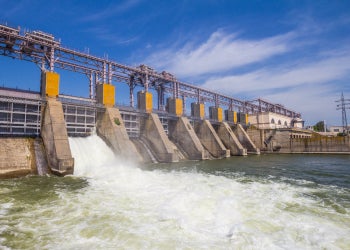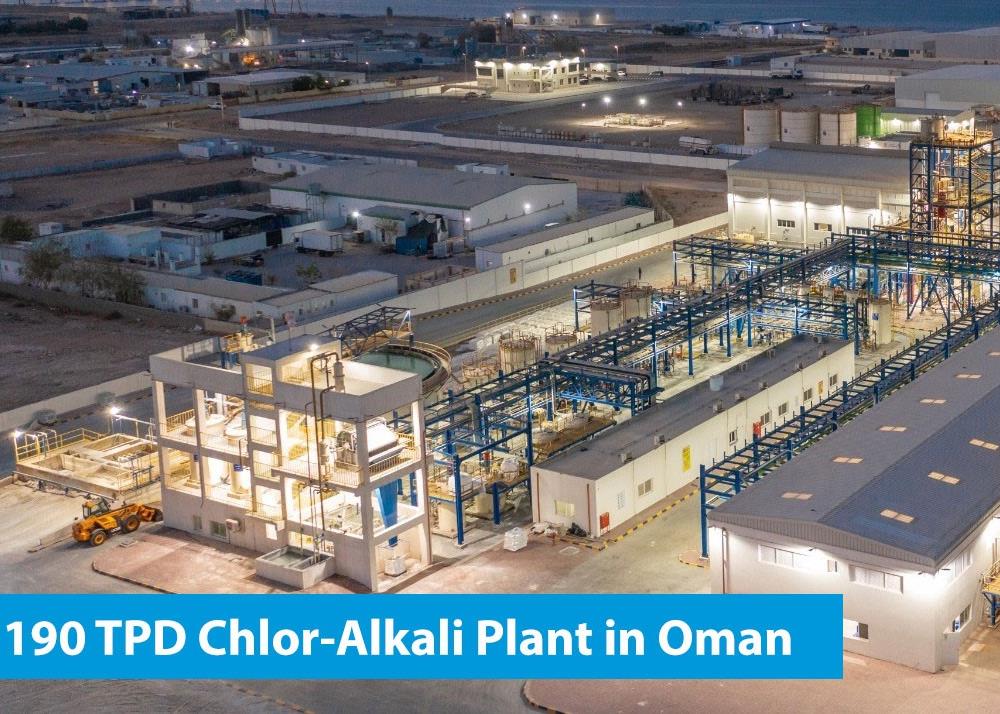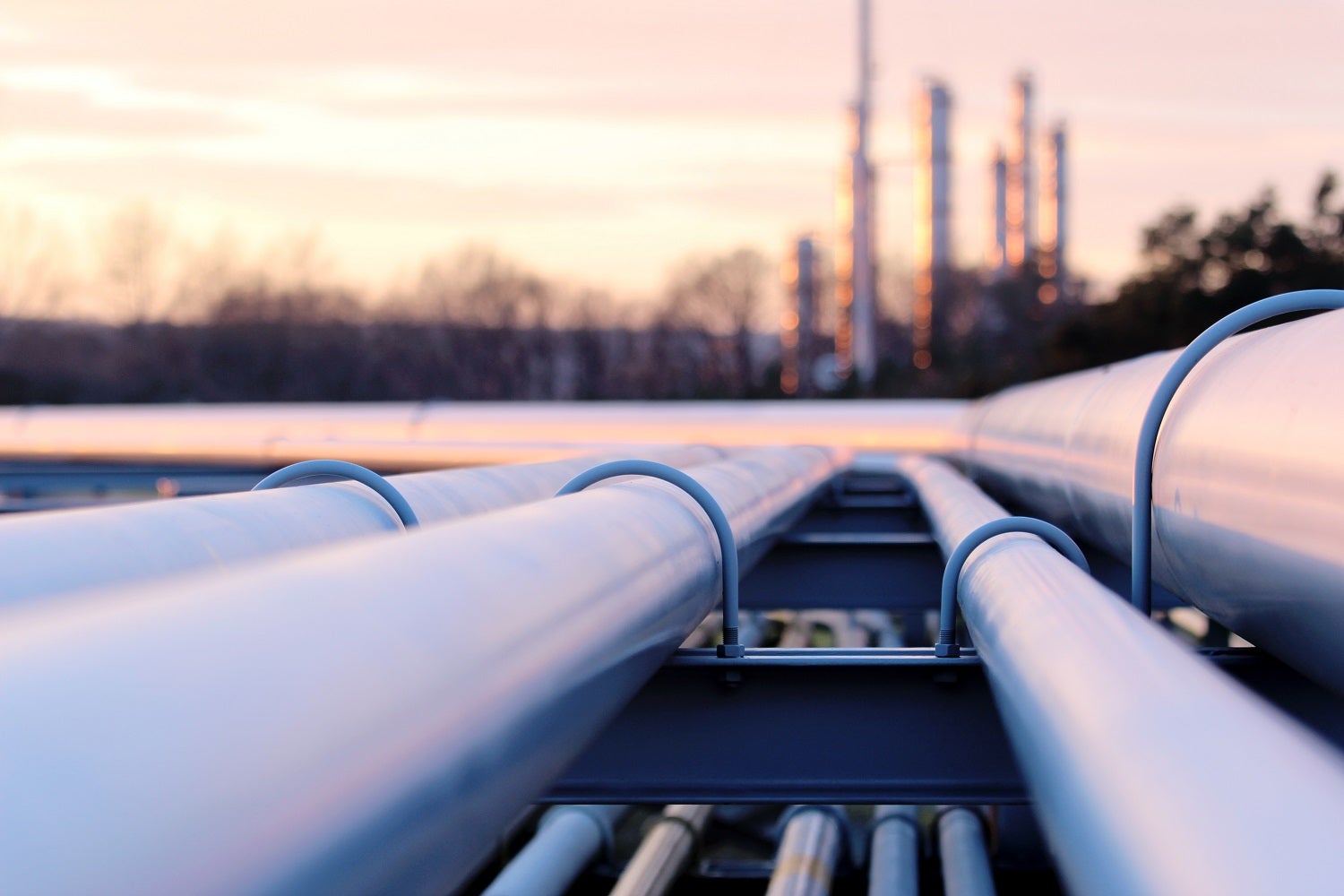Tunnelling projects take the front seat
22 August 2023
The economic and energy diversification programmes of countries in the Middle East and North Africa have provided an impetus for physical infrastructure projects such as tunnels, which have become emblematic of the region’s transition towards a more interconnected and sustainable future.
In some cases, tunnelling projects in the region also extend beyond their utilitarian functions – in addition to decongesting cities and improving water networks, they embody diplomatic overtones and regional cooperation.
Some of the biggest tunnelling projects in the Middle East have historically been executed in the GCC, especially in Saudi Arabia and the UAE. These two countries also promise the most robust future project pipelines.
Neom tunnels
In line with its strategy of redefining sustainable urban living, the integration of tunnels is key to shaping the landscape at Neom in Saudi Arabia.
Tunnels are core components of the integrated transportation network at Neom's The Line, Oxagon and Trojena developments.
According to regional projects tracker MEED Projects, about $6.9bn-worth of schemes with tunnel components are at the pre-execution and execution phases at Neom.
Tunnel projects worth over $4.6bn are in the execution phase. These include the backbone infrastructure tunnels for The Line project, which involve constructing two railway tunnels in parallel using the drill-and-blast method, one for passengers and the other for goods.
In June 2022, Neom awarded $2.7bn-worth of main contracts to the joint venture of Shibh al-Jazira Contracting, China State Construction Engineering and FCC Construction for lots two and three of this scheme.
A separate contract worth about $1.8bn was awarded by Neom for lots four and five to a team of Archirodon, Samsung Engineering and Hyundai Engineering.
The pipeline of projects with tunnel components at Neom is worth about $2.3bn. Some of the major upcoming projects include the time-travel tunnel and funicular railway at Trojena and a package of works for the Spine railway network at The Line. The main contract bids for both packages are in the evaluation phase.
Other upcoming projects include the Spine's desert coastal west cut-and-cover tunnels for The Line, which are under design, and packages one and two of the delta junction tunnel at Oxagon. Neom expects to receive the bids for both packages by 27 August.
Dubai Deep Tunnels Portfolio
In Dubai, meanwhile, the Deep Tunnels Portfolio includes a series of interconnected deep sewage tunnels and associated facilities. The project involves the construction of two sets of deep tunnels terminating at two pump stations located at sewerage treatment plants (STPs) in Warsan and Jebel Ali.
A conventional sewage and drainage collection system and STPs will be built in Hatta.
First announced in 2015, the Dubai Deep Tunnels Portfolio project has faced delays over the years. The tender for consultancy services was first issued in 2015 and was awarded the following year to US-headquartered Parsons.
In June 2017, Dubai Municipality appointed Dutch consulting firm KPMG to assist with preparing the project under a public-private partnership (PPP) model instead of the conventional engineering, procurement and construction model.
There was no significant progress on the project after Dubai Municipality conducted a geotechnical investigation in late 2017.
This changed in June of this year, however, when Dubai’s Executive Council approved the project and said it would require an investment of about AED80bn ($22bn).
It added that the project has been designed to serve the needs of the Dubai population for the next 100 years, in alignment with the Dubai Economic Agenda D33 and the Dubai Urban Plan 2040.
In August, Dubai Municipality invited firms to express interest in bidding for the contract to provide project management consultancy services for the scheme. It expects to receive prequalification applications by 25 August.
Jeddah stormwater system
Jeddah Municipality is also taking steps to improve the city’s water infrastructure, and is investing in stormwater drainage and management systems.
The latest project under this programme is the King Abdullah Road-Falasteen Road (Kafa) tunnel, which is being developed in two phases. Phase one involves the construction of two main storage tunnels, one 5.3 kilometres (km) long and the other 3.4km long.
The scope of phase two includes constructing a terminal pumping station, a marine outfall and all necessary online and offline shafts.
In March, Jeddah Municipality invited contractors to prequalify for the contract to build the tunnels. It is understood the client received responses to the request for qualifications in June.
US-based Aecom is the consultant for the project.
Morocco's undersea rail link
In June this year, the Spanish government revived the Morocco-to-Spain undersea rail link project after allocating about $2.5m for a renewed design study.
The project was launched in 2003 but was put on hold after the 2008 financial crisis. It has undergone several rounds of feasibility studies but remains in the study stage after nearly two decades of funding-linked delays.
The plans involve a double-rail track and additional service line stretching 38.5km between Tarifa in Spain and Tangier in Morocco. A 28km section will run under the Mediterranean Sea at a maximum depth of 475 metres.
The maximum depth of the tunnels will be 300 metres. Each single-track tunnel will have an inner diameter of 7.9 metres, while the service gallery will be 6 metres in diameter.
The two countries are developing the project jointly through Morocco’s National Society for Strait of Gibraltar Studies and the Sociedad Espanola de Estudios para the Comunicacion Fija a Traves del Estrecho de Gibraltar.
In 2006, Swiss engineering company Lombardi Engineering was selected to design the tunnel and the preliminary studies for the project were completed two years later.
Exclusive from Meed
-
 Egypt seeks consultant for major inland waterway study
Egypt seeks consultant for major inland waterway study18 November 2025
-
 Kuwait to make decision on four oil pipeline packages
Kuwait to make decision on four oil pipeline packages18 November 2025
-
 Indian firm wins Oman chemicals project EPC contract
Indian firm wins Oman chemicals project EPC contract17 November 2025
-
 Egypt starts production from strategic gas field
Egypt starts production from strategic gas field17 November 2025
-
 Major Iraq refinery project stalls
Major Iraq refinery project stalls17 November 2025
All of this is only 1% of what MEED.com has to offer
Subscribe now and unlock all the 153,671 articles on MEED.com
- All the latest news, data, and market intelligence across MENA at your fingerprints
- First-hand updates and inside information on projects, clients and competitors that matter to you
- 20 years' archive of information, data, and news for you to access at your convenience
- Strategize to succeed and minimise risks with timely analysis of current and future market trends

Related Articles
-
 Egypt seeks consultant for major inland waterway study
Egypt seeks consultant for major inland waterway study18 November 2025
Egypt’s Transport Ministry has issued an expressions of interest (EOI) request, through the River Transport Authority, to appoint a consultancy firm for a study on a proposed inland waterway linking Lake Victoria to the Mediterranean.
The consultant will carry out basin-wide data collection and prepare a strategic environmental and social assessment for the project.
The assignment includes hydrological, topographic, bathymetric and geotechnical surveys across the Nile Basin.
The consultancy is expected to run for about 15 months, starting in February or March 2026.
Firms must submit EOIs by 6 December.
The study forms part of the Vic-Med project, a multi-country plan to establish a continuous inland waterway from Lake Victoria to the Mediterranean Sea.
The masterplan project aims to reduce transport costs for landlocked countries and provide a lower-carbon alternative to road freight along the Nile corridor
The work is part of phase two, part one of the feasibility study, funded through a $2m grant from the New Partnership for Africa's Development – Infrastructure Project Preparation Facility (NEPAD–IPPF), the African Development Bank’s (AfDB) fund for early-stage project development.
The first phase, completed in July 2019 with $650,000 in AfDB funding, developed the project’s legal and institutional framework and launched two regional inland water transport programmes.
The second phase, valued at $11.7m, covers updated feasibility studies and expanded technical assessments supporting detailed engineering design and cost-benefit analysis in the next stage.
This phase also covers the establishment of a regional operating unit for the project in Cairo.
 READ THE NOVEMBER 2025 MEED BUSINESS REVIEW – click here to view PDF
READ THE NOVEMBER 2025 MEED BUSINESS REVIEW – click here to view PDFMena players up the ante in global LNG production race; Investment takes UAE non-oil economy from strength to strength; Project finance activity draws international lenders back to market
Distributed to senior decision-makers in the region and around the world, the November 2025 edition of MEED Business Review includes:
> AGENDA 1: Gulf LNG sector enters a new prolific phase> INDUSTRY REPORT 1: Region sees evolving project finance demand> INDUSTRY REPORT 2: Iraq leads non-GCC project finance activity> GREEN STEEL: Abu Dhabi takes the lead in green steel transition> DIGITISATION: Riyadh-based organisation drives digital growth> UAE MARKET FOCUS: Investment shapes UAE growth storyTo see previous issues of MEED Business Review, please click herehttps://image.digitalinsightresearch.in/uploads/NewsArticle/15108707/main.jpg -
 Kuwait to make decision on four oil pipeline packages
Kuwait to make decision on four oil pipeline packages18 November 2025

Kuwait is evaluating bids on four packages for a major pipeline project after prices were submitted earlier this month, according to industry sources.
The four separate packages cover pipeline work in the north, south, east and west regions of the country, sources said.
Although the total of all bids submitted by Kuwait-based Alghanim International General Trading & Contracting is the lowest at KD419m ($1.4bn), the company submitted the lowest individual bid on only one package, located in northern Kuwait.
Its bid for the north Kuwait package was KD149.8m ($488.3m).
Mechanical Engineering & Construction Company submitted the lowest bids for pipeline work on two packages located in the south and east of the country.
Both of these bids were valued at KD97,868,394 ($319m).
Al-Dar Engineering & Construction Company is the low bidder on the fourth package, for pipe work in western Kuwait, submitting a bid of KD64,825,398 ($211.3m).
Together, all four contracts are expected to be worth about $1.4bn when awarded.
The scope of all four packages focuses on developing new flowlines and connecting pipelines for oil-producing wells and water wells.
In some cases, companies are also required to replace old flowlines.
The contracts are based on work orders, so when KOC needs to connect wells it will issue a request for work execution, industry sources said.
Kuwait is trying to boost project activity in its upstream sector.
The country’s national oil company, Kuwait Petroleum Corporation, is aiming to increase oil production capacity to 4 million barrels a day (b/d) by 2035.
In August, Kuwait announced that it was producing 3.2 million b/d.
Earlier this month, KOC said it was planning to spend KD1.2bn ($3.92bn) on its exploration drilling programme through 2030.
https://image.digitalinsightresearch.in/uploads/NewsArticle/15106496/main.png -
 Indian firm wins Oman chemicals project EPC contract
Indian firm wins Oman chemicals project EPC contract17 November 2025
Register for MEED’s 14-day trial access
Indian contractor Nuberg EPC has won a contract to perform engineering, procurement and construction (EPC) works on a project to build chlor alkali and calcium chloride plants in Oman for privately-owned Al-Ghaith Chemical Industries.
The project involves expanding Al-Ghaith’s existing chlor alkali plant in Sur Industrial City, by adding 120 tonnes a day (t/d) of capacity, taking the unit’s total output capacity to 190 t/d. The project also involves building a calcium chloride plant that will have a production capacity of 80 t/d.
Nuberg EPC said the contract is being executed on a lump sum turnkey basis, with its scope covering design, front-end engineering and design (feed), detailed engineering, procurement, fabrication, construction, commissioning and handover.
Project execution is already under way, with completion targeted within 19 months, Nuberg EPC said.
The project marks the second phase of Al-Ghaith’s integrated chemicals complex in Sur and represents a first-of-its-kind large-scale chlor alkali expansion in Oman.
Nuberg EPC also performed EPC works on the original chlor alkali plant, which has a capacity of 70 t/d.
In addition to the Oman project, Al-Ghaith has, in the previous decade, also brought on board Nuberg EPC for its chlor alkali and calcium chloride plants in Abu Dhabi. Those contracts covered the commissioning of a 60 t/d chlor alkali plant that was later expanded to 120 t/d, and the execution of a 125 t/d calcium chloride plant and a 50 t/d carbon dioxide plant.
Nuberg EPC has also executed the expansion of a 45 t/d chlor alkali plant and a greenfield 80 t/d calcium chloride plant for Oman Chlorine in Sohar, increasing the total chlor alkali output capacity to 75 t/d.
https://image.digitalinsightresearch.in/uploads/NewsArticle/15104096/main5048.jpg -
 Egypt starts production from strategic gas field
Egypt starts production from strategic gas field17 November 2025
Egypt has started gas production from the West Burullus field in the Mediterranean Sea, after connecting the first wells to the national gas grid, according to a statement from the country’s Petroleum & Mineral Resources Ministry.
Productivity testing showed an output rate approaching 45 million cubic feet a day (cf/d).
Kareem Badawi, Egypt’s Petroleum & Mineral Resources Minister, said he intends to accelerate development of the field and confirmed that work is under way to connect two additional wells, with the aim of increasing production to 75 million cf/d in the coming months.
He added that the ministry aims to cut the county’s gas import bill by boosting domestic production.
The operator of the concession is Cheiron, an Egyptian independent exploration and production company.
Egypt’s oil ministry said in its statement that the West Burullus field development project represents a model for future integrated projects and investment plans.
It said that a range of domestic and foreign companies are involved in bringing the field into production.
In February, a banking consortium led by Banque du Caire, alongside Arab International Bank, Al-Baraka Bank Egypt and Saib Bank, arranged $75m in syndicated medium-term financing for Cheiron Egypt Delta, a subsidiary of the Cheiron Group.
This financing will help cover part of the investment costs for the gas field development project.
At the time, Cheiron said that the financing will provide up to 45.5% of the total $165m investment required for the project.
 READ THE NOVEMBER 2025 MEED BUSINESS REVIEW – click here to view PDF
READ THE NOVEMBER 2025 MEED BUSINESS REVIEW – click here to view PDFMena players up the ante in global LNG production race; Investment takes UAE non-oil economy from strength to strength; Project finance activity draws international lenders back to market
Distributed to senior decision-makers in the region and around the world, the November 2025 edition of MEED Business Review includes:
> AGENDA 1: Gulf LNG sector enters a new prolific phase> INDUSTRY REPORT 1: Region sees evolving project finance demand> INDUSTRY REPORT 2: Iraq leads non-GCC project finance activity> GREEN STEEL: Abu Dhabi takes the lead in green steel transition> DIGITISATION: Riyadh-based organisation drives digital growth> UAE MARKET FOCUS: Investment shapes UAE growth storyTo see previous issues of MEED Business Review, please click herehttps://image.digitalinsightresearch.in/uploads/NewsArticle/15102295/main3406.jpg -
 Major Iraq refinery project stalls
Major Iraq refinery project stalls17 November 2025

Construction has yet to start on Iraq’s Al-Faw Investment Refinery project due to a range of problems, according to industry sources.
In May last year, a statement released by the Iraqi Prime Minister’s Office said that Iraq’s state-owned Southern Refineries Company and China National Chemical Engineering Company (CNCEC) had signed a contract to develop the project.
Iraq’s Oil Ministry previously said the project would be worth $7bn-$8bn.
One source said: “This project is failing to make progress despite the efforts of senior political figures in the country.”
A meeting was chaired by Iraqi Prime Minister Mohammed Shia Al-Sudani in August this year to discuss and try to resolve the problems that are stopping the commencement of construction, according to industry sources.
It is believed that financing remains a key obstacle for the project.
The Al-Faw project is part of the Iraqi government’s plan to increase Iraq’s refining capacities, attract foreign investment and increase the production of petroleum products domestically.
The refinery will have a capacity of 300,000 barrels a day and will produce oil derivatives for both domestic and international markets.
The project will be carried out in two stages.
The first phase will involve refining operations, while the second will involve constructing a petrochemicals complex with a capacity of 3 million tonnes a year.
The project also includes the construction of a 2,000MW power plant and the establishment of the Al-Faw Academy for Refinery Technology, to train 5,000 Iraqi workers that will eventually work at the facility.
Hualu, a subsidiary of CNCEC, signed a preliminary principles agreement for the project in December 2021.
At the time, Iraq’s Oil Ministry said that the project would have a value of $7bn-$8bn.
Due to material price inflation since December 2021, some insiders believe that the project value may now be significantly higher.
 READ THE NOVEMBER 2025 MEED BUSINESS REVIEW – click here to view PDF
READ THE NOVEMBER 2025 MEED BUSINESS REVIEW – click here to view PDFMena players up the ante in global LNG production race; Investment takes UAE non-oil economy from strength to strength; Project finance activity draws international lenders back to market
Distributed to senior decision-makers in the region and around the world, the November 2025 edition of MEED Business Review includes:
> AGENDA 1: Gulf LNG sector enters a new prolific phase> INDUSTRY REPORT 1: Region sees evolving project finance demand> INDUSTRY REPORT 2: Iraq leads non-GCC project finance activity> GREEN STEEL: Abu Dhabi takes the lead in green steel transition> DIGITISATION: Riyadh-based organisation drives digital growth> UAE MARKET FOCUS: Investment shapes UAE growth storyTo see previous issues of MEED Business Review, please click herehttps://image.digitalinsightresearch.in/uploads/NewsArticle/15102287/main.jpg


